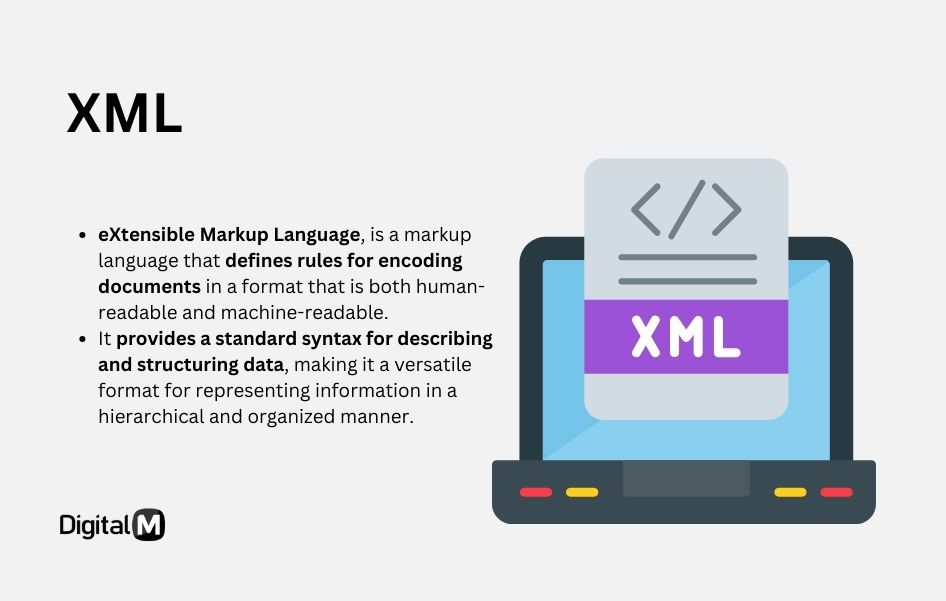XML (eXtensible Markup Language)
XML, or eXtensible Markup Language, is a markup language that defines rules for encoding documents in a format that is both human-readable and machine-readable. It provides a standard syntax for describing and structuring data, making it a versatile format for representing information in a hierarchical and organized manner.
XML is like a language for structuring information in a way that both computers and humans can understand. It’s commonly used for sharing data between different systems.

Key Points:
Markup Language: Similar to HTML, XML uses tags to define elements within a document, but unlike HTML, it focuses on describing the structure and meaning of data rather than presentation.
Versatility: XML is a generic language that can be used to represent a wide variety of data types and structures.
Hierarchical Structure: Data in XML is organized in a tree-like structure with a root element containing nested child elements.
Basic Syntax:
An XML document consists of a prologue, containing information about the version and encoding, followed by the document’s elements enclosed in tags.
Attributes:
Elements can have attributes, providing additional information about the data they represent.
Uses of XML:
Data Exchange: XML is commonly used for exchanging data between different systems and platforms.
Configuration Files: Many software applications use XML for storing configuration settings.
Web Services: XML is a common format for representing data exchanged between web services.
XML vs. HTML:
While HTML is primarily used for displaying content on the web, XML is designed for describing data. HTML has a predefined set of tags with a focus on presentation, while XML allows users to define their own tags for structuring data.
Validation:
XML documents can be validated against a Document Type Definition (DTD) or an XML Schema Definition (XSD) to ensure that they adhere to a specified structure.
Why it Matters:
Interoperability: XML facilitates data exchange between different systems and applications.
Structured Data: It provides a standardized way to structure and represent data.
Flexibility: XML’s flexibility makes it adaptable to various data representation needs.
In summary, XML (eXtensible Markup Language) is a versatile markup language used for structuring and representing data in a hierarchical format. It is commonly employed for data exchange between different systems, storing configuration information, and representing structured data in various applications.

